Angus grower builds custom single-pass drill to save labour
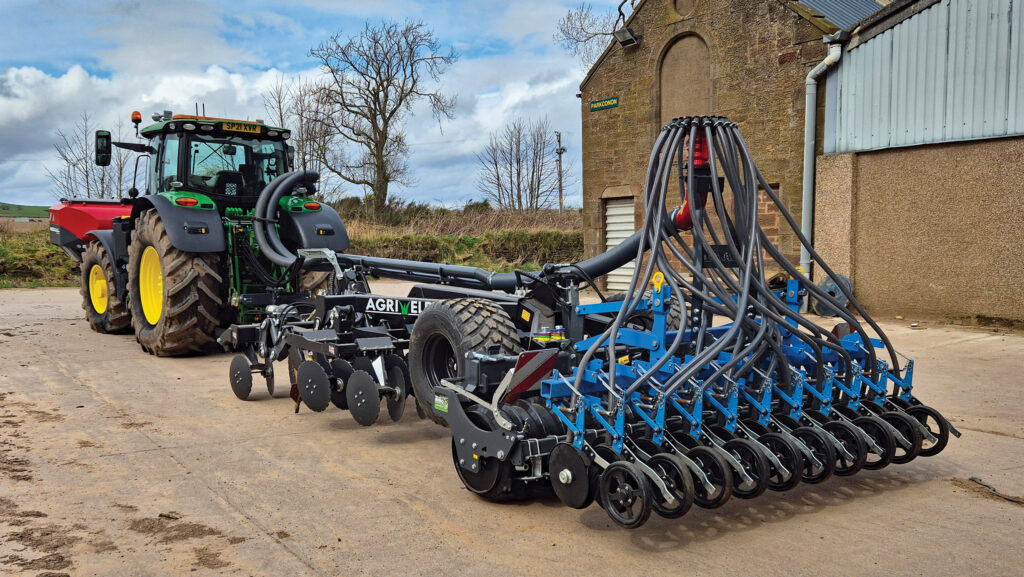 © James Andrews
© James Andrews Jettisoning his power harrow drill in favour of a bespoke single-pass rig has allowed Arbroath arable and spud grower Craig Reekie to dramatically streamline his seeding operations.
The Anglo-German mash-up centres on an Agriweld Multi Till 5T – legs, discs and a packer – with a Lemken Solitair coulter bar at the rear and a Horsch Partner split hopper on the front linkage.
Together, these give him numerous options for tilling soil and planting seed/fertiliser, including the ability to subsoil, prepare the ground and drill in one operation.
See also: Farmer combines Karat and Solitair for one-pass bean drill
The idea was born out a need to reduce the amount of labour required during drilling season.
With his 80-year-old dad cutting back on tractor seat time, and field work resting almost entirely in Craig’s hands, the old system of subsoiling, ploughing and combination drilling was no longer tenable.
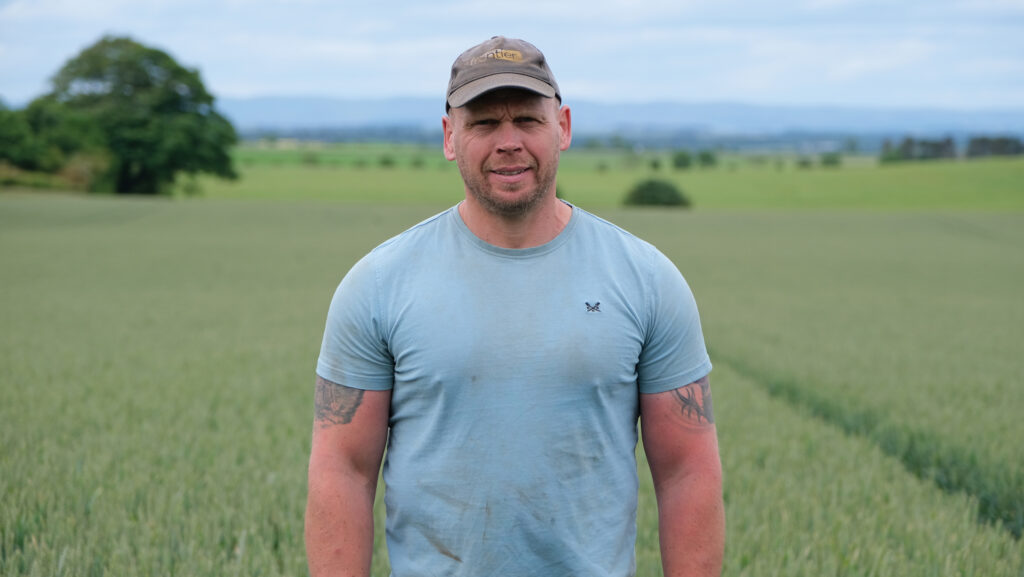
Craig Reekie © James Andrews
Initial attempts at achieving single-pass nirvana involved teaming an Agriweld Mantis front-mounted cultivator with the farm’s existing Lemken Solitair power harrow drill.
Though an acceptable setup for lighter soil loosening duties, the tractor became virtually impossible to steer when the legs were pushed down to subsoiling depth.
A rethink was required, and Craig soon concluded that he needed a machine that put all soil working and drilling elements behind the tractor.
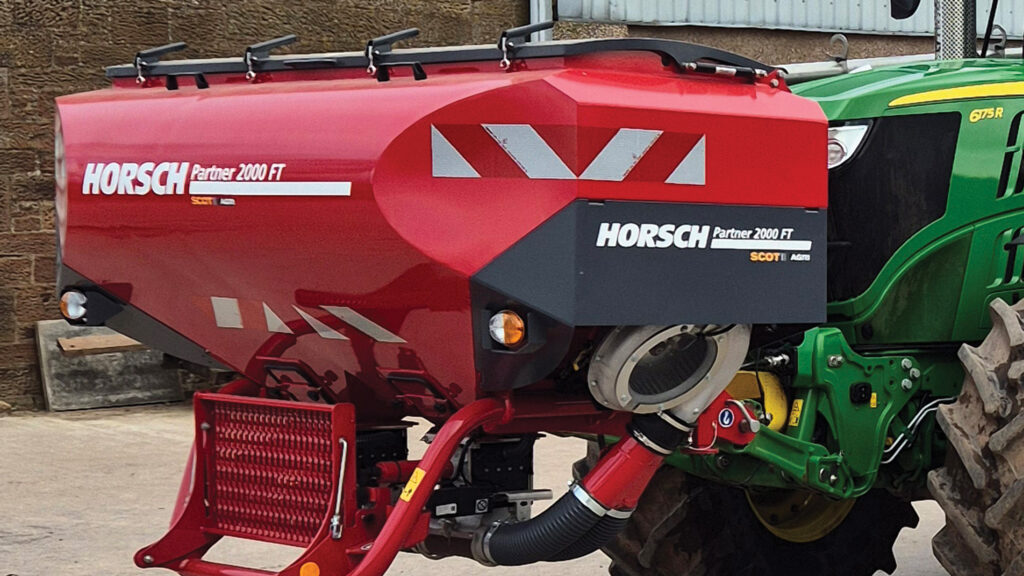
© James Andrews
In addition to making sure these components were pulled rather than pushed through the soil, it would mean tractor wheels longer padded the ground back down before seed was placed.
By Craig’s reckoning, the simplest way of achieving this was to find a suitable multi-stage cultivator to which a coulter bar could be mounted.
And hoping to avoid hammering his bank account, he went in search of a decent second-hand machine to test the concept.
Agriweld bespoke build
None he found had the correct configuration and it was a similar story when he was forced to start looking at new models until, that is, he came across Agriweld’s 3m Multi Till 5T.
Only minor tweaks were required in order for this to suit his needs and the firm’s willingness to carry these out sealed the deal.
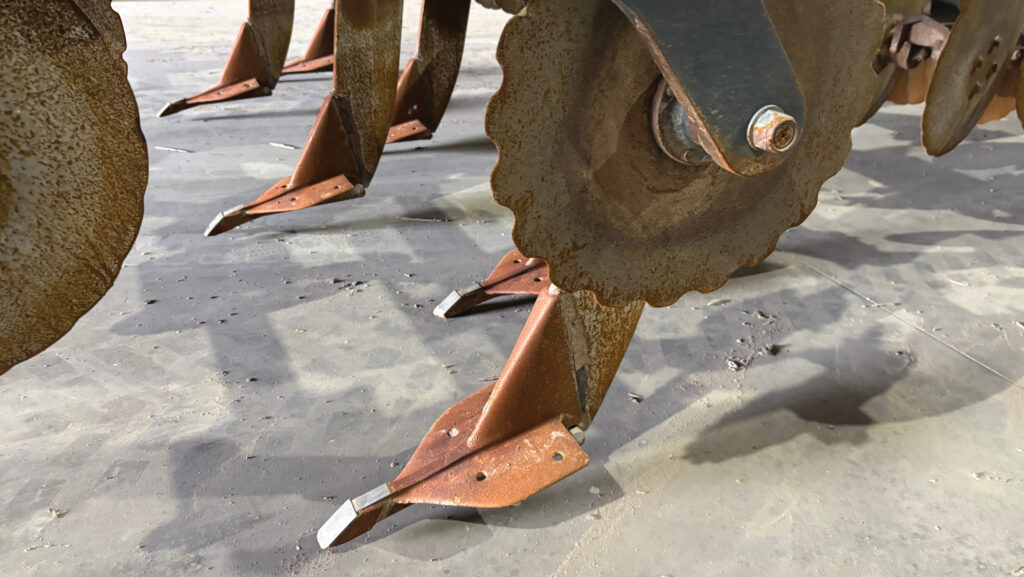
© James Andrews
As per the standard-spec model, his machine has a row of 460mm leading discs to cut and clear trash, followed by six auto-reset legs fitted with Sumo-style points.
A double row of mixing discs comes next, with a ribbed packer roller finishing the job off.
Thanks to hydraulic rams on each of the sections, it offers five modes of operation – discs only, legs only, legs and discs, discs and packer, or discs, legs and packer.
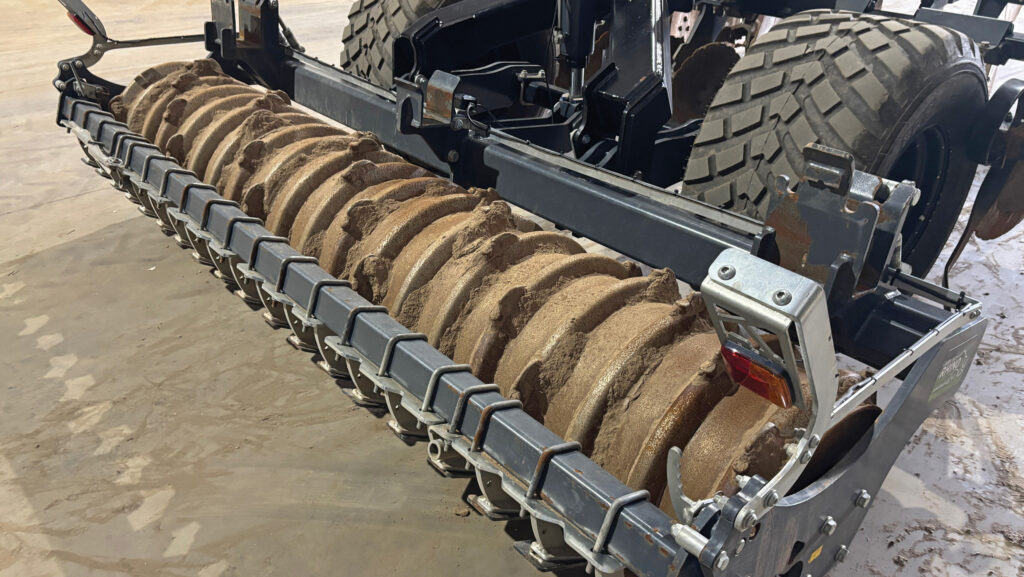
© James Andrews
Adding a coulter bar
The first of Craig’s modifications was to have brackets fitted on the rear packer roller frame to support the Lemken Solitair drill bar, which he ordered with 20 disc coulters set at 150mm spacings.
Getting the drill to lift independently of the packer was a must, so this came with its own hydraulic coulter lift assembly.
In addition, Agriweld modified the drill bar so that it could be slotted neatly onto the cultivator and fabricated a frame to support the Horsch distribution head.
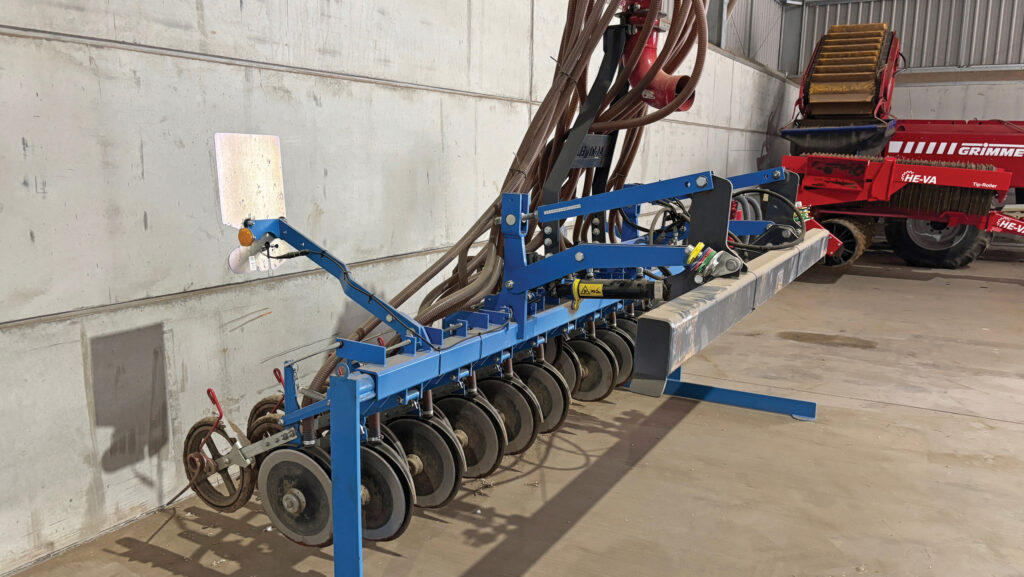
© James Andrews
Initially, this was set at a fixed angle, but lateral adjustment was added later so that it could be levelled when other elements of the machine are altered.
Next, he addressed the rings on the packer roller, as these needed to be directly in line with the coulters to provide an even, consolidated surface for them to work in.
As standard, Agriweld fits its 3m packers with 14 rings, but they made a custom version to suit, along with a matching set of scrapers.
This has worked well, although Craig would ideally like some deeper rings – something Agriweld says it can now offer.
“In certain conditions it compacts the soil too much between the rows so there’s not enough for the following harrow to flick over the seed, but I’m hoping the new rings will fix this,” he says.
Seed-bed levelling
Another challenge has been creating a level seed-bed as, like any cultivator of this type, the outer cultivating disc leaves a slight furrow in the ground.
To combat the problem, Agriweld fashioned some border discs which help keep soil within the width of the machine and fill in any holes.
While they were at it, they created a similar setup for the legs to prevent lifted soil rolling onto already drilled ground.
Various tweaks have had to be made to get these performing at their best but they’re now doing a decent job of levelling the surface.
Hydraulic services
Other modifications include running a hydraulic service to the rear of the cultivator to operate the coulter lift rams, and fitting twin drill tubes – one for seed and one for fertiliser.
These streams are combined using a Y-shaped connector before the products travel up to the single distribution head.
The unit responsible for seed/fertiliser storage and metering is a Horsch Partner 2000 FT pressurised front tank, which operates via isobus.
This isn’t set up to leave tramlines – wheel marks are put in when spraying – and the fact that Craig’s John Deere 6175R is running on RTK means markers aren’t required.
This approach allows him to drill in lands, meaning the lengthy rig can be turned on a modest 21m headland.
Using it
The drill was completed by February 2024 and the first crop it planted was spring barley, directly into an overwintered stubble.
It established well and went on to achieve about 8.7t/ha, which is roughly in line with the farm’s five-year average.
“In the early days, it didn’t look quite as tidy as a crop established with a power harrow combination, but the end result was just as good and it was so much less labour intensive.”
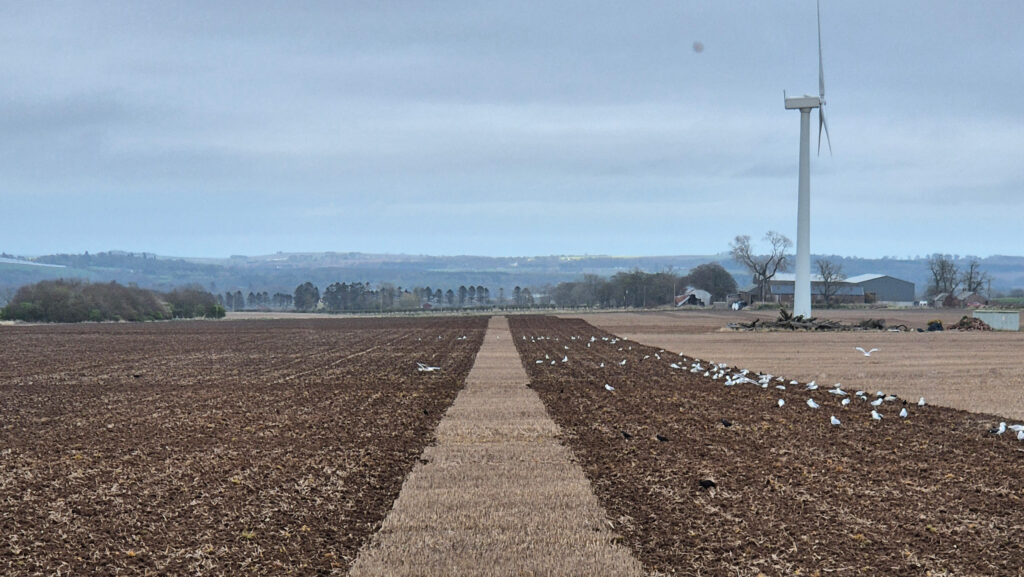
© James Andrews
Oilseed rape came next, which Craig intended to plant at 50cm row spacings by blocking off outlets in the distribution head.
Unfortunately, this created too much back pressure in the seed pipes, so he had to switch back to using all the outlets.
“It’s established well enough, but the plants look far better behind the legs where they’ve got a loose channel for the roots to go down,” he says.
As an experiment for the coming season, he’s fashioned a bar with six outlets that dribble seed on the surface, directly behind each leg.
This is fitted with its own six-outlet Horsch distribution head and attaches using the same mounting points as the Lemken coulter bar, making it easy to swap between the two.
Winter wheat also went in well, but the second season of spring barley didn’t get off to such a good start.
Most of the blame can be pointed at chopped straw, which hadn’t broken down fully over the winter and reduced seed-to-soil contact.
“I don’t like the compaction we get when straw is baled and loaded on the field so I prefer to chop it these days,” he says.
“It doesn’t seem to cause problems in following wheat crops, but I might have to switch back to baling ahead of spring barley.”
Drill setup
For most crops, the drill is set with all elements in the ground and the legs working at a depth of about 180mm.
With this setup, the 6175R – remapped to put out its boosted power of 215hp at all times – can rattle along at 10-12kph.
“At these speeds there’s plenty of mixing and it puts some nice soil on the top for the coulters to drill into,” says Craig.
“It’s a different story after tatties as I push the legs right down to 300mm to lift compaction – the tractor is on its knees then, and speed drops to 6-7kph.”
The beauty of the rig is that there are countless ways of configuring it to suit various conditions, as well as being able to use it as a stand-alone cultivator.
But the payoff is that it can take time to set up correctly. Working heights and angles of almost all components can be tweaked which, in turn, have an effect on the work others are doing.
Plus, it requires the services of all five of the tractor’s spool valves.
“When you try something new like this you’ve got to accept that it might take time to get it right,” says Craig.
“There are still a few niggles to iron out, but the basics are working as they should – they need to be too, as I can’t afford for it to fail.”

